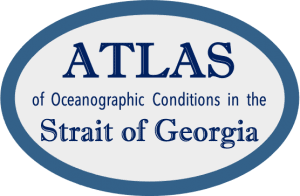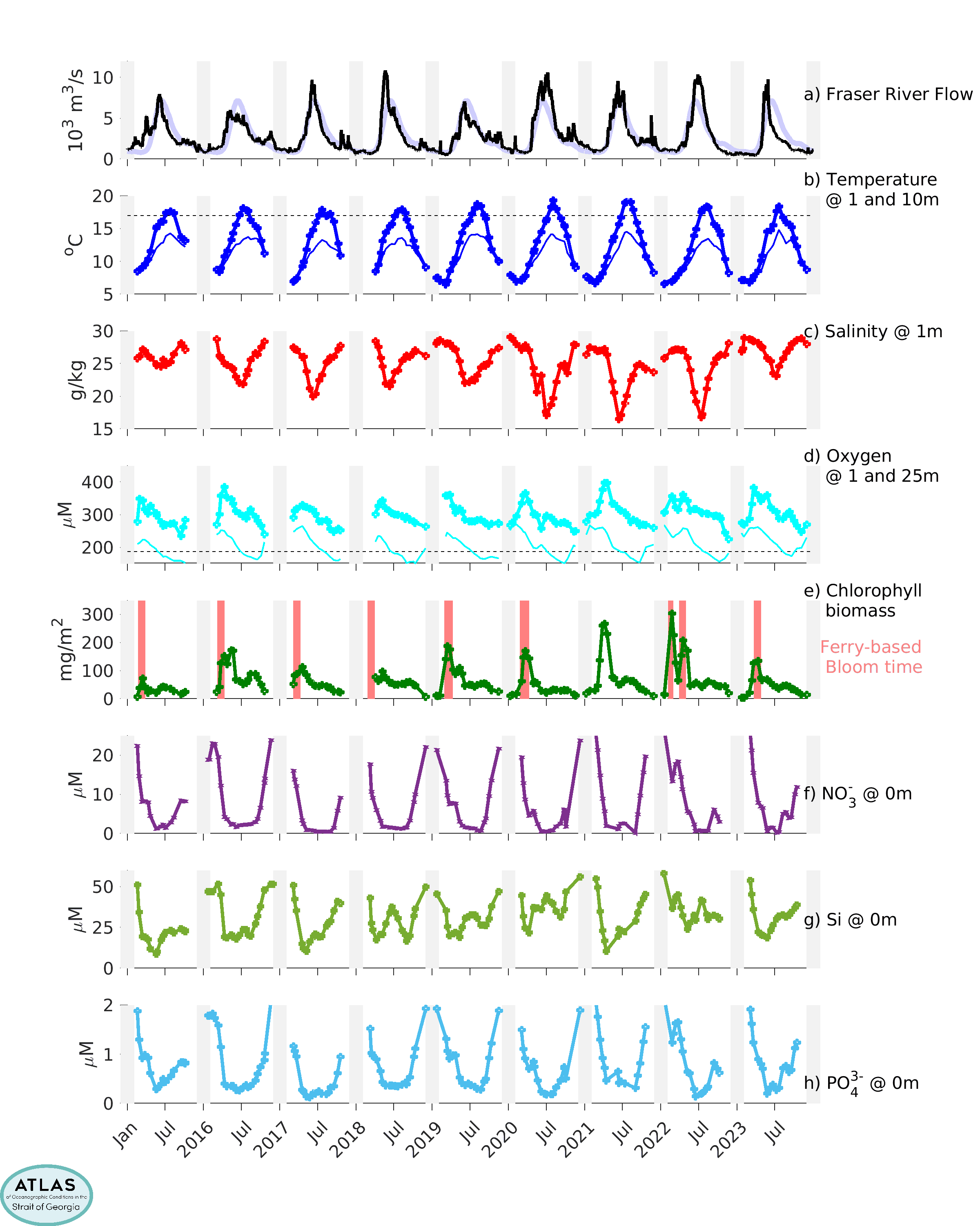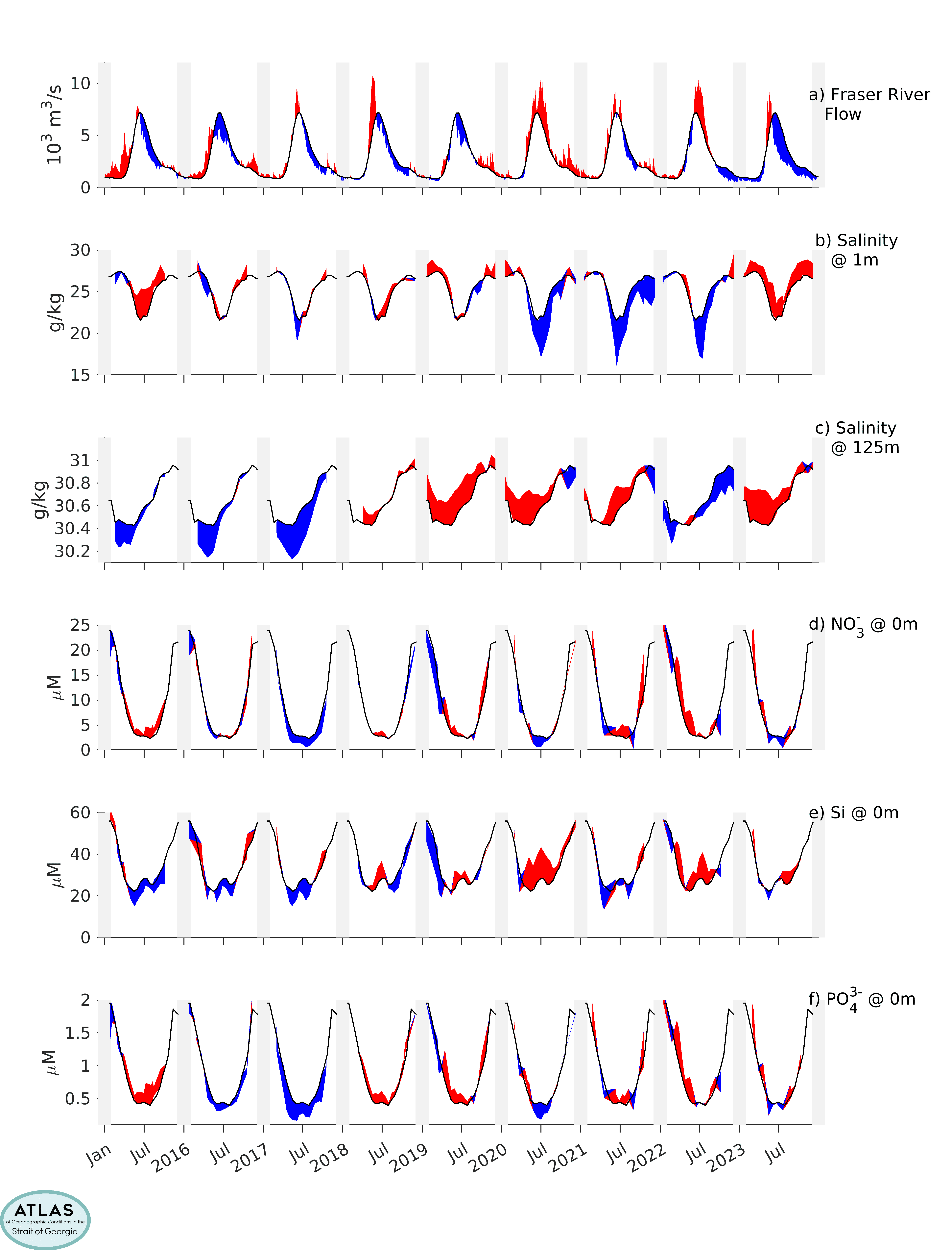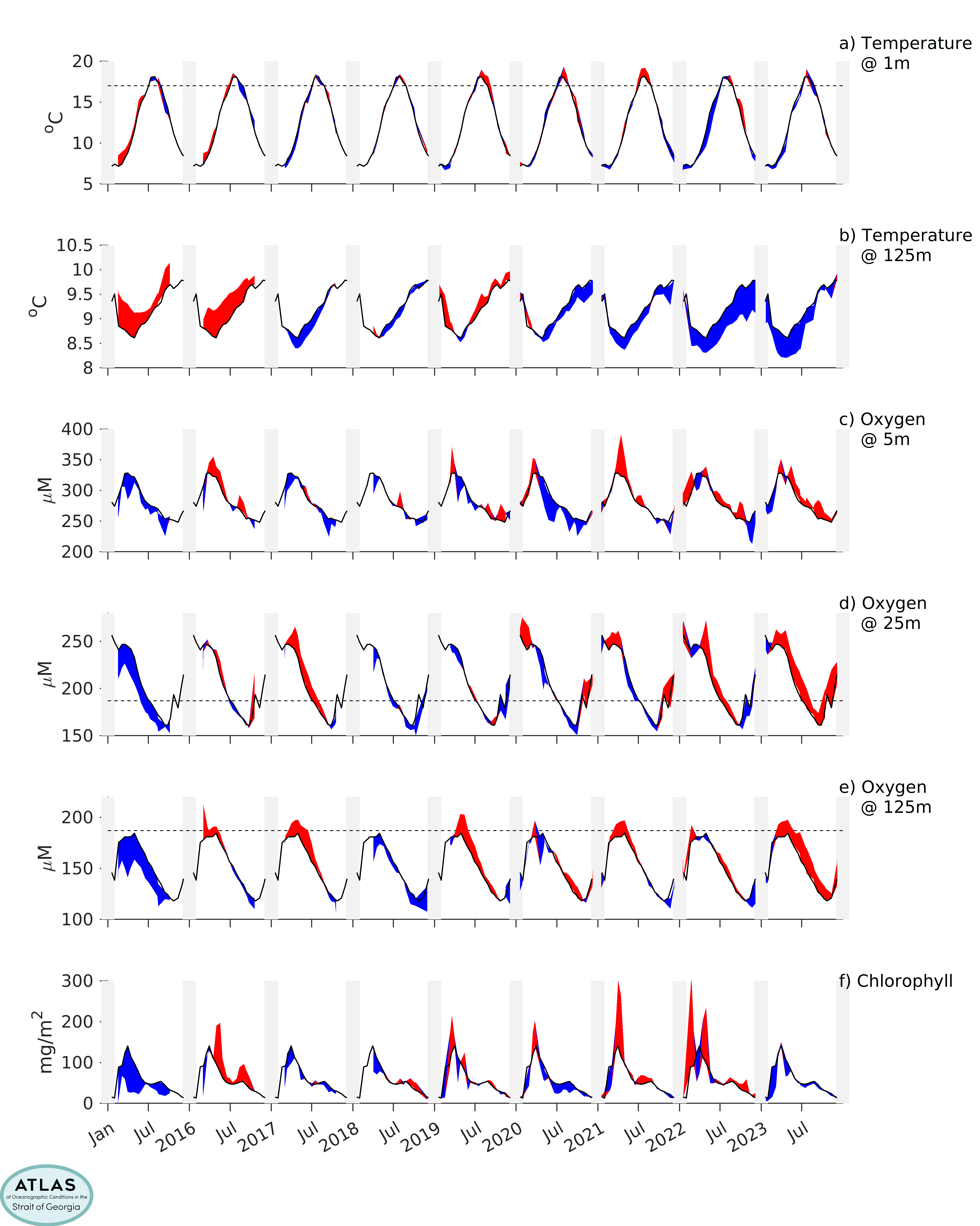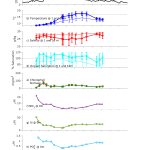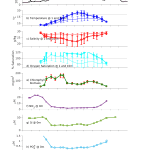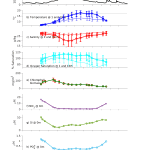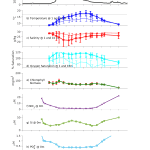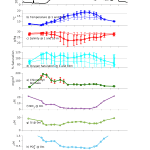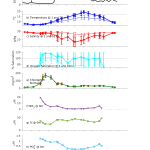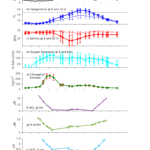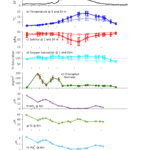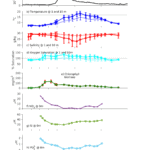Mean Conditions
Mean Conditions in the Strait of Georgia
Mean near-surface conditions for the Strait of Georgia since 2015. This figure summarizes thousands of stations, the combined efforts of dozens of people over many years.
Note in particular the 5th row, which shows the seasonal and interannual changes in the the biomass of primary producers (phytoplankton) in the Strait, the ultimate source of organic material for all animal life in the Strait. Sometime during March/April in each year the spring phytoplankton bloom occurs and the biomass increases tremendously before exhausting the immediately available nutrients. Since this very important event sometimes occurs between sampling times, or earlier than sampling occurred in some years, red markers are show to indicate the bloom time as estimated from continuous measurements of near-surface Chlorophyll from BC ferries.
This figure shows the anomalies around the seasonal mean for salinity at various depths, and surface nutrients. At the top, we have also shown the flow of the Fraser River, as measured at Hope. The summer influx of fresh water from the Fraser, with smaller contributions from other rivers, is responsible for the low summer salinities in the Strait.
However, although there is slight tendency for above-average flows to result in lower-than-usual surface salinities, the other year-to-year variations shown are still a mystery.
More anomaly time series are shown here. Speculate on how the red/blue patterns for the different plots are related!
Mean annual conditions for the Strait of Georgia (averaged over regions 2/3/4/6/7/8/9) for a) Fraser River flow, b) Temperature at 1 m and (as a thin line) at 10 m, c) salinity at 1 m and (as a thin line) at 10 m, d) Oxygen Saturation at 1 m and (as a thin line) at 10 m, e) Depth-integrated chlorophyll biomass, f) Surface nitrate, g) surface silicate, h) surface phosphate.



